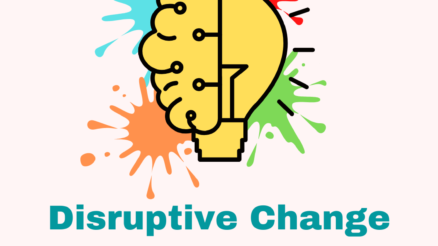Change has become a constant.
Whether driven by technological advancements, shifts in market dynamics, or internal restructuring, adapting to change is essential for sustained growth and competitiveness.
However, successfully navigating these transitions requires more than just a well-crafted strategy—it demands the unwavering commitment and active involvement of leadership.
Sponsorship model for change management is one form of active involvement of leadership is such initiatives.
In this blog post, we delve into the purpose and significance of the sponsorship model for change management.
We explore how a robust sponsorship approach can serve as the linchpin for organizational success in times of change.
Let’s dive in and explore in detail.
What is sponsorship model for change management?
The sponsorship model for change management refers to a structured approach that emphasizes the importance of leadership sponsorship and support in successfully implementing organizational change.
This model recognizes that the active involvement and commitment of key leaders are crucial for the success of any change initiative.
Key Aspects of Sponsorship Model in Change Management
Here are some key aspects of the sponsorship model for change management:
Leadership Commitment: Visible Support and Communication
Leadership commitment is a cornerstone of successful change management, and it manifests through visible support and effective communication.
Leaders must go beyond endorsing change initiatives; they must actively promote them by participating in communication efforts and embodying the desired behaviors.
Visibility is key, as leaders become the face of change, instilling confidence and trust among employees.
Communication, meanwhile, is the bridge that connects leadership vision to employee understanding.
Leaders articulate the reasons for change, highlight anticipated benefits, and convey a compelling vision for the future.
Through transparent and persuasive communication, leaders cultivate understanding and garner support, paving the way for a smoother transition.
Sponsorship Coalition: Forming a Team and Clear Roles
A robust sponsorship coalition is instrumental in steering organizational change.
By forming a team comprising influential leaders from diverse organizational levels, the coalition ensures a unified approach to driving and sustaining change.
Collaboration is essential for achieving alignment across various departments and functions.
Clear roles and responsibilities within the coalition are equally vital, preventing ambiguity and ensuring that everyone contributes meaningfully to the change effort.
Each sponsor’s role is defined, outlining their specific contributions and areas of focus. This clarity fosters cohesion within the team, propelling the change initiative forward with a shared purpose and commitment.
Read more about: 7 Key Roles of Sponsor in Change Management
Change Network: Identifying Change Agents
Building a change network involves identifying and cultivating change agents throughout the organization.
These individuals serve as advocates for the change, offering support to their peers and addressing concerns and resistance on the ground.
Change agents act as a vital link between leadership and employees, facilitating a smoother flow of information and creating a network that actively champions the transformation.
By empowering these agents, organizations tap into the collective strength of their workforce, ensuring that the change initiative is embraced at every level.
Read more about: Role of Change Agent in Organizational Change
Skills Development: Leadership Training
Effective change management requires leaders equipped with the necessary skills to guide their teams through the transition.
Leadership training becomes a pivotal component, offering leaders the tools and knowledge needed to navigate change successfully.
Workshops, coaching sessions, and other resources are deployed to enhance leaders’ change management skills.
Investing in leadership development ensures that leaders are well-prepared to handle the complexities of change, inspiring confidence and competence among their teams.
Read more about: How to Design Training of Change Management for Employees?
Monitoring and Feedback: Continuous Feedback
An adaptive change management approach involves continuous monitoring and feedback mechanisms.
Establishing systems to gather feedback from employees and stakeholders throughout the change process provides valuable insights.
Leaders use this feedback to gauge the impact of the change, identify potential challenges, and make informed adjustments to the change plan.
Continuous feedback fosters a responsive and agile change environment, allowing the organization to evolve in real-time based on the input and experiences of those directly affected by the change.
Recognition and Rewards: Acknowledgment
Acknowledging and celebrating milestones and achievements related to the change initiative is essential for sustaining momentum.
Recognition reinforces positive behaviors, signaling the importance of the change to the organization.
Celebrating successes, whether big or small, boosts morale and reinforces the notion that the organization values and appreciates the efforts put into driving and adapting to change.
Read more about: Short Term Wins in Change Management
Adapting to Resistance: Addressing Resistance
Change is often met with resistance, and leaders must be prepared to address it proactively.
This involves acknowledging and understanding the concerns and challenges raised by employees. Leaders work to overcome resistance by addressing specific concerns, providing additional support, and making necessary adjustments to the change plan.
By engaging with resistance rather than dismissing it, leaders foster a culture of open dialogue and collaboration, turning challenges into opportunities for improvement and growth.
Read more about: Understanding Resistance to Change
Roles of Different Actors in Sponsorship model for change management
The sponsorship model involves a collaborative effort among various actors, each contributing their unique skills and perspectives to drive and sustain organizational change.
Effective communication, clear roles, and active engagement from all stakeholders are essential for a successful change management process.
In the sponsorship model for change management, various actors play distinct roles, each contributing to the overall success of the change initiative.
Here’s an overview of the roles played by different actors:
Executive Sponsors
Executive sponsors are typically high-level leaders, often from the C-suite, who provide overall strategic direction and vision for the change initiative.
They champion the change at the highest levels, allocate resources, and ensure that the change aligns with the organization’s strategic goals.
Executive sponsors also play a crucial role in securing organizational commitment and resources.
Sponsorship Coalition
The sponsorship coalition is a group of influential leaders from various levels and functions within the organization who actively support and drive the change.
Members of the coalition work together to communicate the importance of the change, address challenges, and ensure alignment across different departments.
Clear roles and responsibilities are defined within the coalition to promote collaboration and accountability.
Change Agents
Change agents are individuals identified throughout the organization who act as advocates for the change at the grassroots level.
Change agents help disseminate information, address concerns, and provide support to their peers.
They serve as a crucial link between leadership and employees, facilitating effective communication and encouraging widespread adoption of the change.
Project Managers
Project managers are responsible for the day-to-day planning, implementation, and monitoring of the change initiative.
They work closely with the sponsorship coalition and change agents to ensure that the change plan is executed effectively.
Project managers manage timelines, budgets, and resources, and provide regular updates to sponsors on the progress of the initiative.
Communication Specialists
Communication specialists focus on crafting and delivering consistent, clear, and persuasive messages about the change.
They collaborate with leaders, sponsors, and change agents to develop communication strategies.
This includes creating communication materials, organizing town hall meetings, and utilizing various channels to ensure that the organization is well-informed and engaged throughout the change process.
Human Resources (HR) Professionals
HR professionals contribute to the change management process by providing expertise in organizational behavior, employee relations, and talent management.
They may be involved in assessing the impact of the change on employees, developing training programs, and addressing human capital-related issues.
HR professionals also play a key role in managing the people side of change, including addressing employee concerns and ensuring a smooth transition
Employees
Employees are crucial stakeholders who experience and are directly impacted by the change.
While employees may not be formal sponsors, their engagement is essential.
Employees are responsible for adapting to the change, providing feedback, and actively participating in the change process.
Their commitment and cooperation are vital for the overall success of the change initiative.
Why Active Sponsorship Model for Change Management is Essential?
The active sponsorship model is essential for change management because it helps create an environment where organizational transitions are not only successful but also sustainable in the long term
Here are some reasons that explain why active sponsorship model is essential:
Leadership Credibility and Visibility
In the realm of change management, active sponsorship is essential for building and maintaining leadership credibility.
When leaders actively endorse and champion a change initiative, their visibility lends credibility to the effort.
Employees are more likely to trust and embrace the change when they see leaders actively participating in communication efforts, demonstrating commitment, and modeling the desired behaviors.
Active sponsorship enhances the perceived legitimacy of the change, fostering a sense of trust and confidence among the workforce.
Alignment and Consistency
Active sponsorship ensures alignment across all levels of the organization. When leaders are actively engaged in supporting the change, it sends a powerful message of consistency and unity.
A cohesive sponsorship coalition, comprising leaders from different functions and levels, works collaboratively to drive the change in a synchronized manner.
This alignment minimizes confusion, reduces resistance, and creates a unified front, allowing the organization to move forward with a shared purpose and direction.
Overcoming Resistance and Addressing Concerns
Resistance to change is a natural human response, and active sponsorship is crucial for overcoming such resistance.
When leaders actively address concerns, provide clarifications, and engage in open dialogue, it becomes easier to identify and mitigate potential roadblocks.
Active sponsors demonstrate a willingness to adapt the change plan based on feedback, making employees feel heard and valued.
This proactive approach fosters a culture where concerns are acknowledged, addressed, and transformed into opportunities for improvement.
Motivating and Inspiring the Workforce
Active sponsorship serves as a motivational force for employees navigating through change.
Leaders who actively promote the change, acknowledge milestones, and celebrate achievements contribute to a positive and energized work environment.
By recognizing and rewarding efforts, sponsors inspire employees to actively participate in the change process.
This motivation helps sustain momentum, boosts morale, and creates a sense of accomplishment, reinforcing the notion that the organization values and appreciates its workforce.
Driving Cultural Transformation
Organizational change often involves a cultural shift, and active sponsorship is instrumental in driving this transformation.
When leaders actively embrace and embody the desired cultural changes, employees are more likely to follow suit.
Active sponsors set the tone for the expected behaviors, values, and norms associated with the change.
Their consistent commitment to the new direction helps embed the desired culture into the fabric of the organization, ensuring that the change is not just a project but a lasting transformation that becomes ingrained in the organizational DNA.
Final Words
In wrapping up our discussion on the importance of active sponsorship in change management, it’s clear that having leaders who actively support and lead the way during times of change is crucial for success. Think of it like this: when your leaders are visibly involved and show they believe in the changes, it makes everyone else feel more confident and comfortable about what’s happening.
So, in a nutshell, having leaders actively involved in change isn’t just a good idea – it’s the key to making sure the changes stick and become a lasting part of how things are done around here. It’s like having the captain of the ship lead the way through rough waters, making the journey smoother and more successful for everyone on board.



